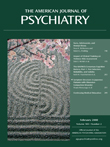Abstract
Objective: White matter abnormalities may interfere with limbic cortical balance and lead to chronic depressive syndromes. The authors used diffusion tensor imaging to test the hypothesis that depressed elders who fail to achieve remission have microstructural white matter abnormalities in cortico-striato-limbic networks implicated in geriatric depression. Method: The subjects were nondemented individuals with nonpsychotic major depression. After a 2-week placebo period, those subjects who had a Hamilton Depression Rating Scale (HAM-D) score of 18 or greater received escitalopram, 10 mg daily, for 12 weeks. Remission was defined as a HAM-D score of 7 or below for 2 consecutive weeks. Diffusion tensor imaging was performed at a 1.5 Tesla scanner, and voxel-based analysis of fractional anisotropy was conducted using age as the covariate. Results: Subjects who failed to achieve remission (N=23) had lower fractional anisotropy in multiple frontal limbic brain areas, including the rostral and dorsal anterior cingulate, dorsolateral prefrontal cortex, genu of the corpus callosum, white matter adjacent to the hippocampus, multiple posterior cingulate cortex regions, and insular white matter, relative to those who achieved remission (N=25). In addition, lower fractional anisotropy was detected in the neostriatum and midbrain as well as select temporal and parietal regions. Conclusions: Lower fractional anisotropy in distributed cerebral networks is associated with poor antidepressant response of geriatric depression and may represent a neuroanatomical substrate that predisposes to this disorder.



